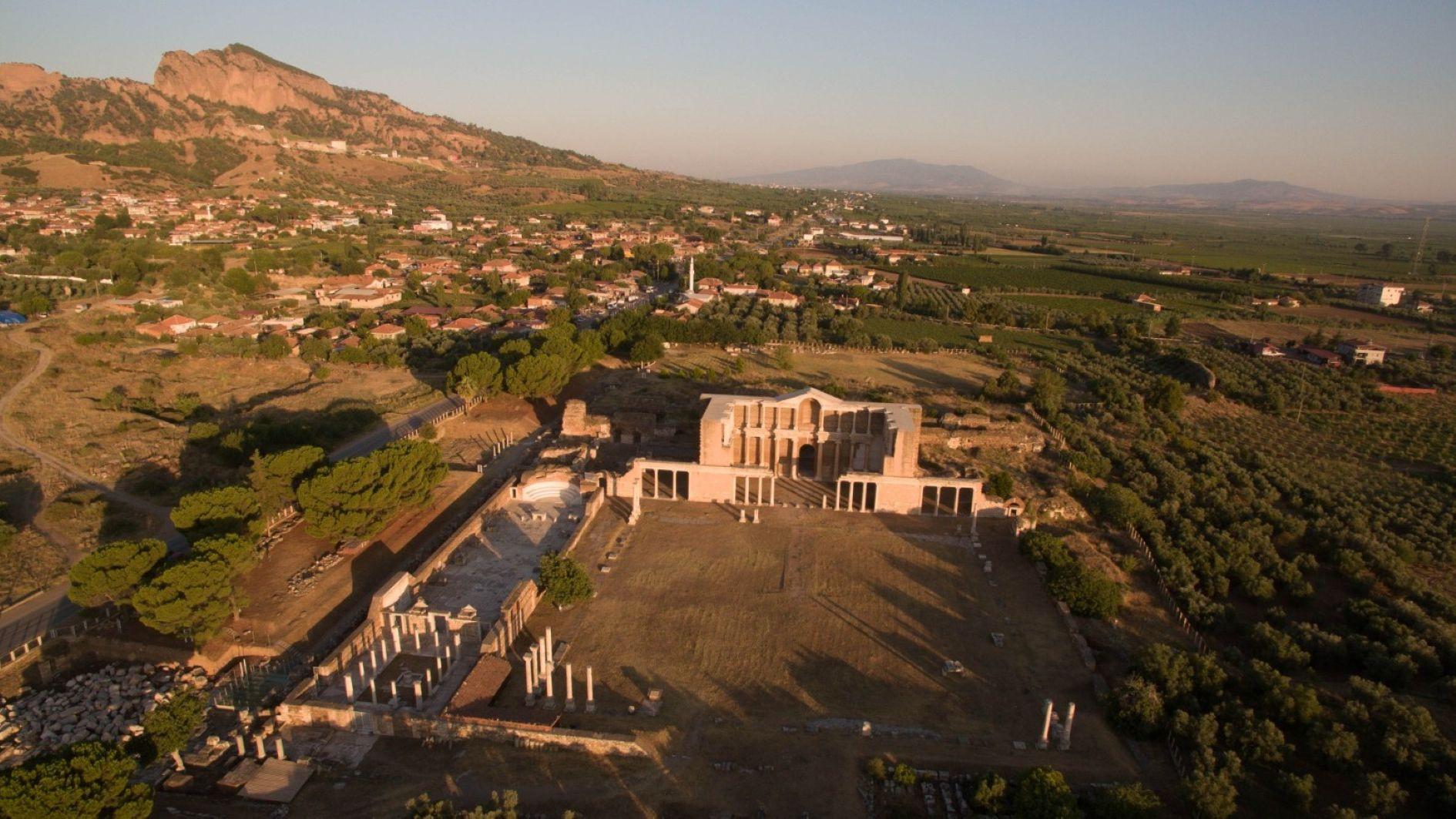
The ancient city of Sardis and the Bin Tepe (Thousand Hills) Lydian Tumuli in western Türkiye have been officially added to UNESCO’s World Heritage List, following a unanimous decision during the 47th session of the World Heritage Committee, held in Paris on July 6.
Culture and Tourism Minister Mehmet Nuri Ersoy made the announcement on social media, declaring the site “our 22nd cultural treasure to be included in the UNESCO family.” He emphasized the historical and cultural value of the region, describing it as the birthplace of the world’s first minted coin and a once-thriving capital of the Lydian civilization.
“With its 20-meter-thick defensive walls and a vast necropolis area covering 7,500 hectares, Sardis and the Bin Tepe tumuli now stand on the global stage as symbols of Lydian heritage,” Ersoy said. “This extraordinary site, now recognized as part of the common heritage of humanity, continues to captivate visitors with its mystique, especially now as part of our night museum initiative.”
The site had been on UNESCO’s Tentative List since 2013 and was inscribed under Criterion 3, which highlights sites bearing unique testimony to cultural traditions or civilizations that have disappeared. The inscription marks another step forward in Türkiye’s ongoing efforts to preserve and showcase its rich historical landscapes.
Speaking from Paris, Türkiye’s Permanent Delegate to UNESCO Ambassador Gülnur Aybet expressed pride at the successful inscription. “We are very pleased with this decision,” she said. “Sardis was the capital of the Lydian Kingdom between the eighth and sixth centuries B.C., and it became a major regional power — the first Iron Age state of western Anatolia.”
Aybet explained that while Lydian remains lie beneath layers of Hellenistic, Roman and Byzantine architecture, the area’s continuous settlement for nearly 3,000 years makes it one of the most complex and valuable archaeological sites in Anatolia.
Lydia is often credited as the first civilization to mint coins from precious metals, and the Lydians’ wealth and innovation helped shape the economic systems of the ancient world. The UNESCO listing also includes the sprawling Bin Tepe tumuli, a cluster of nearly 119 monumental burial mounds spread across 75 square kilometers.
“These tumuli are among the largest in the world, and their construction began in the 7th century B.C.,” said Aybet. “Later, the Persians continued to use these burial grounds, showing how political and cultural transitions are reflected in the very landscape of the region.”
Ongoing excavation and protection works
Birol İnceciköz, General Director of Cultural Heritage and Museums, described the listing as “wonderful news for Türkiye and for the people of Manisa.” He noted that the inscription followed years of diligent work by the Ministry’s Department of Identification and Planning and thanked all the experts who contributed to the nomination file.
“This heritage asset, once recognized only in the Tentative List, has now been acknowledged for its rarity and authenticity as one of the world’s most exceptional sites,” İnceciköz said. “This is a proud moment not only for Manisa but for our entire country.”
He also referenced the Ministry’s recently launched “Heritage for the Future” project, aimed at securing permanent UNESCO status for many of Türkiye’s archaeological and historical treasures. “Our country is one of the most archaeologically active nations in the world today,” he noted. “And Türkiye is now a rule-setting country in global heritage discussions.”
In the same vein, İnceciköz emphasized Türkiye’s growing role within UNESCO. “Being a member of the World Heritage Committee gives us voting rights, the ability to propose amendments and contribute to the safeguarding of other countries’ heritage as well,” he added.
Professor Nicholas Cahill, head of the Sardis excavation team, said the UNESCO decision would provide a critical boost for preserving and promoting the ancient city. “One of our greatest responsibilities is to protect this remarkable site that we love so much,” he told the state-run Anadolu Agency. “Today’s decision will make a significant contribution toward that goal.”
He said global recognition would draw attention to the importance of the site and increase international awareness. “Sardis is a place that many people fall in love with, whether it is the landscape, the ruins, the food or the local community,” he added. “Many of those who come to work here end up staying, and that says a lot.”
The Sardis excavation and preservation work is conducted through national and international partnerships, combining archaeological fieldwork with scientific studies and interdisciplinary conservation strategies.
As Türkiye adds another name to its growing list of UNESCO-recognized sites, officials continue to emphasize the importance of cultural preservation not just for tourism and national pride, but for global understanding and shared human heritage.
“This is a success story built on science, heritage, diplomacy and dedication,” said Ambassador Aybet. “And there is much more to come.”